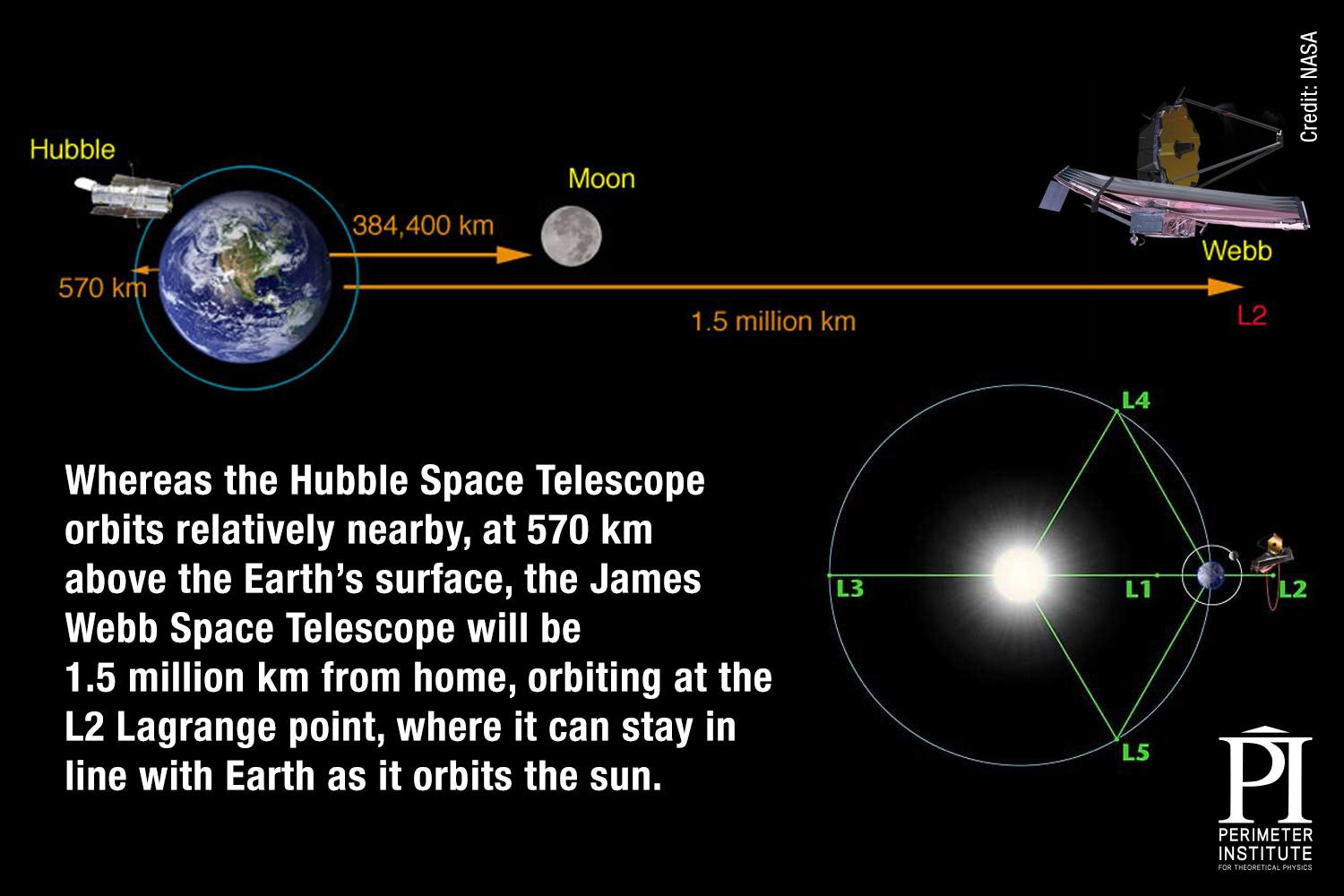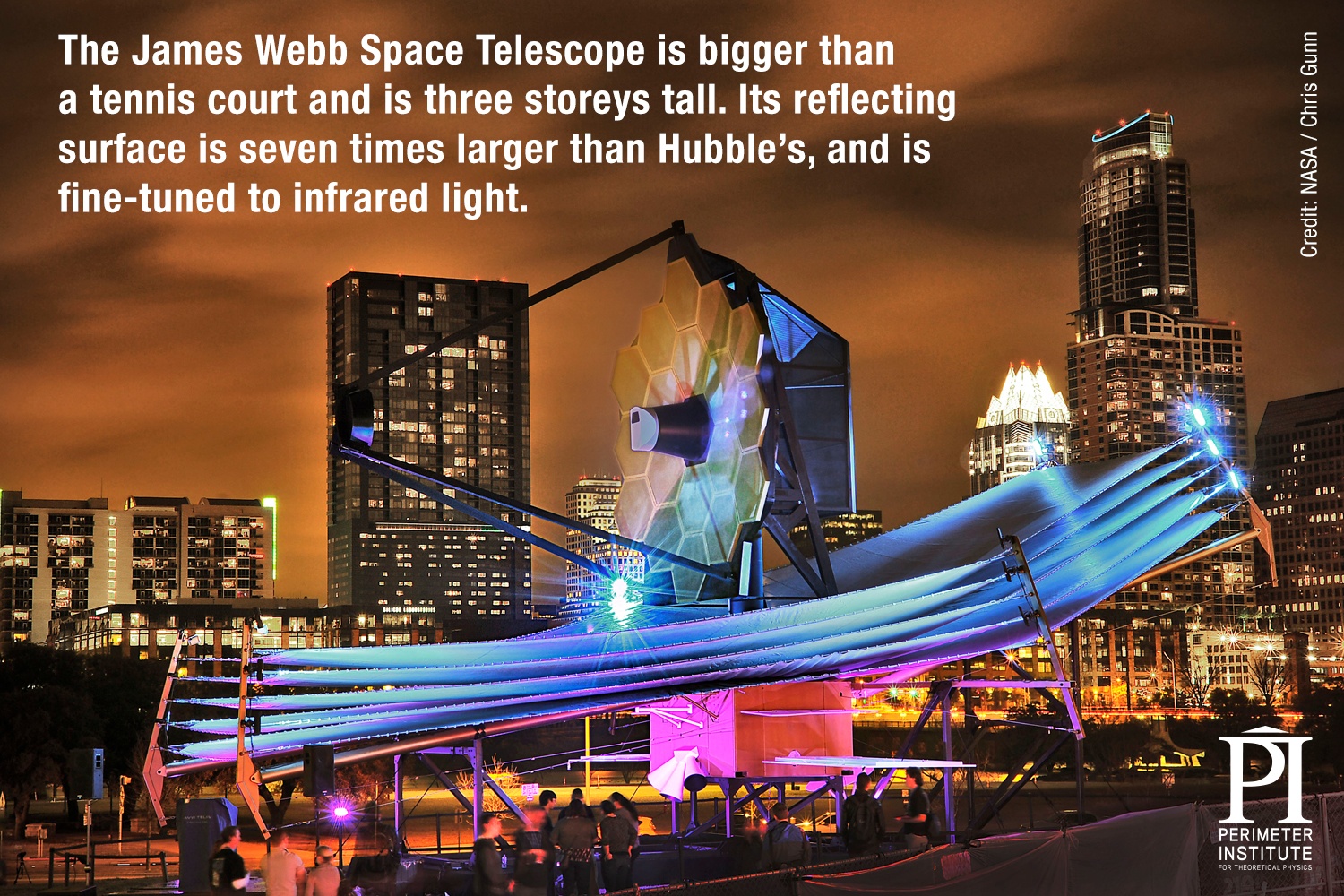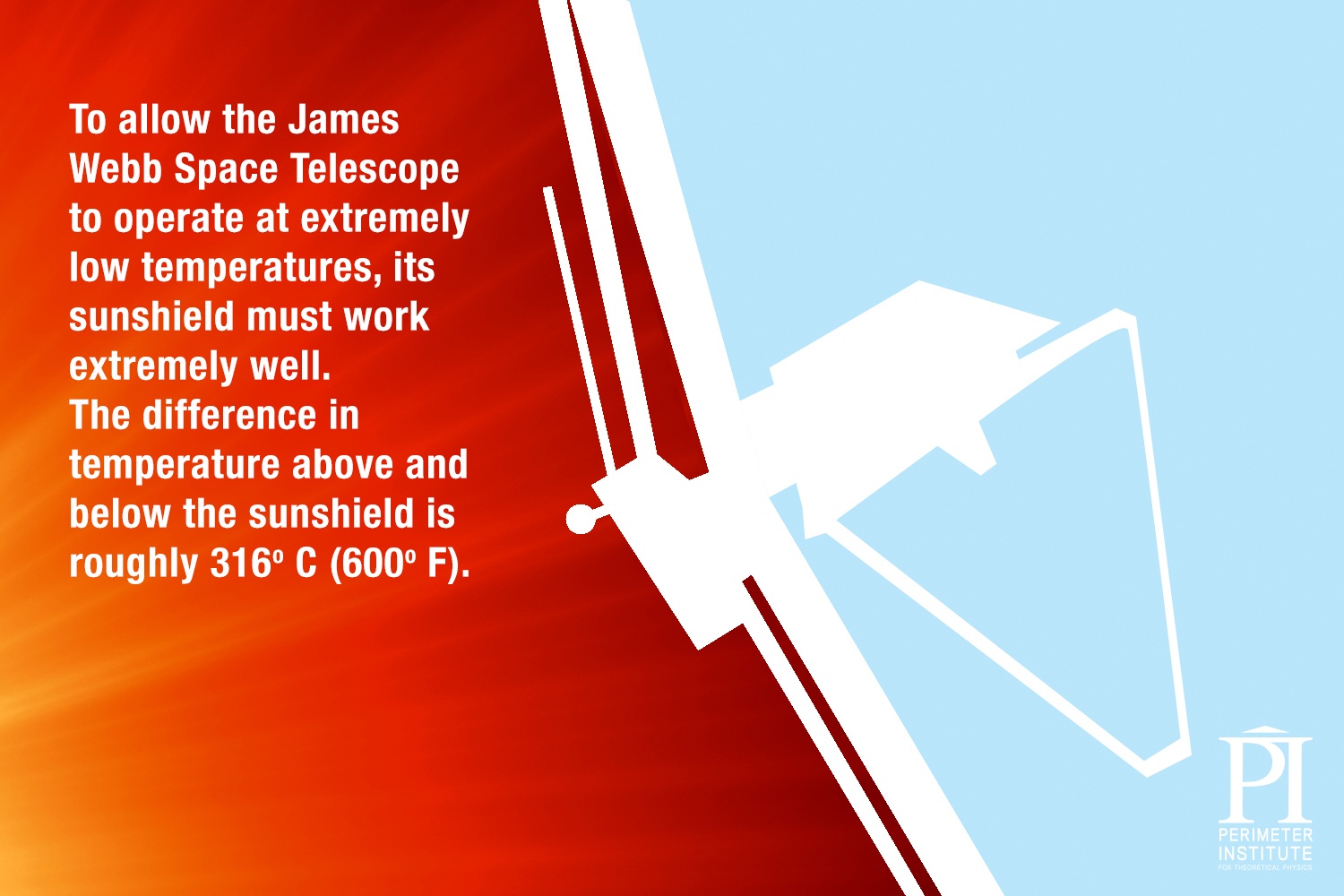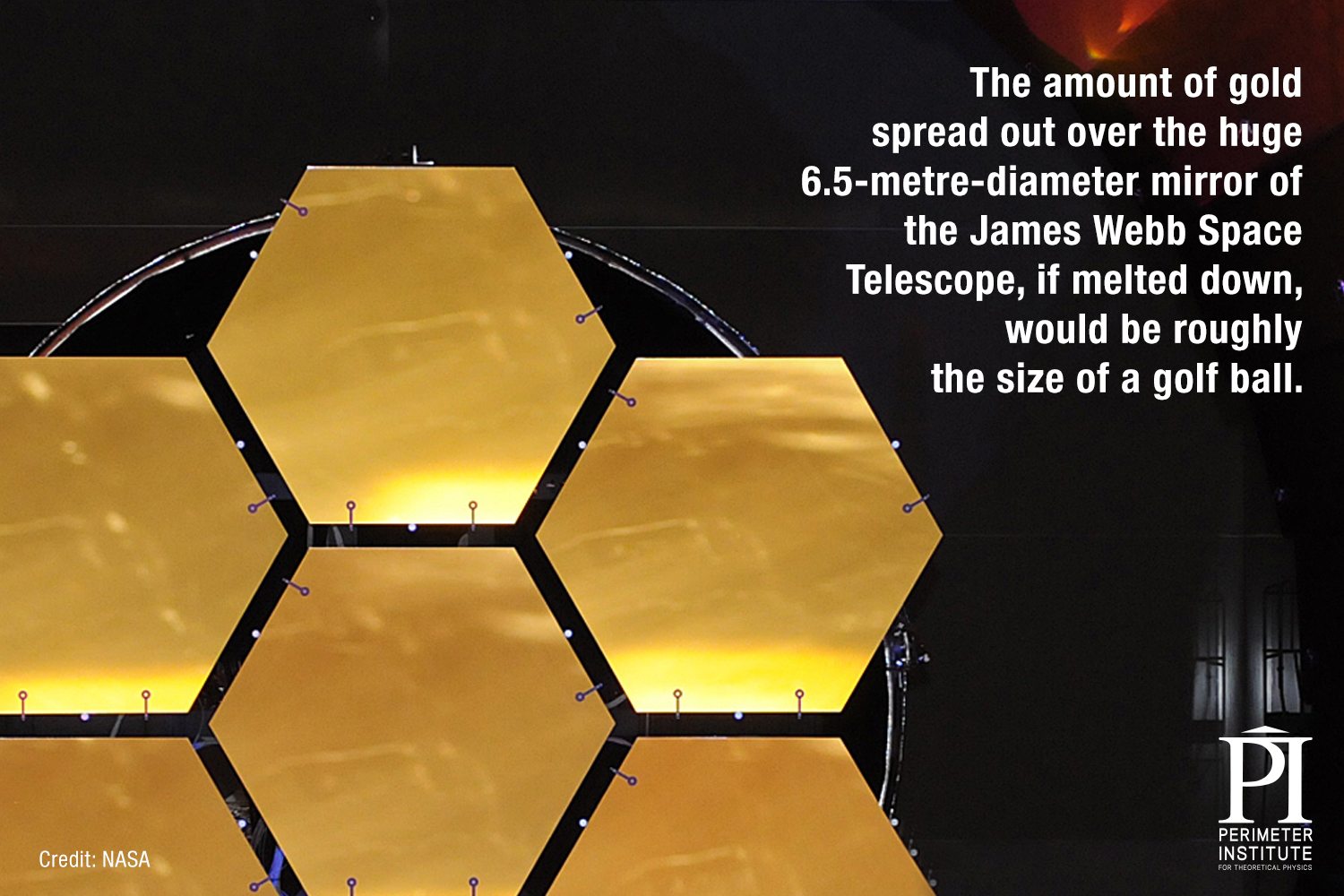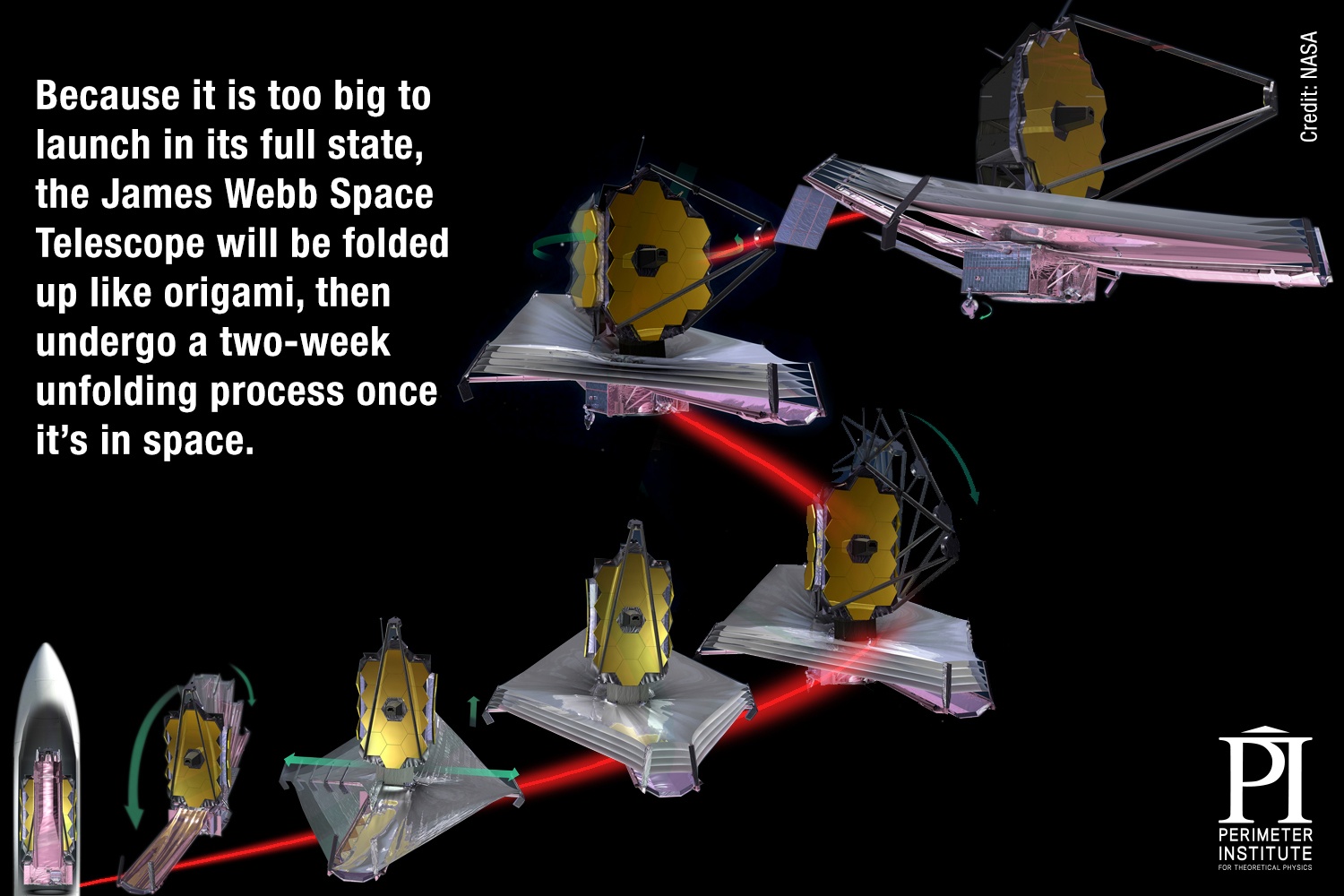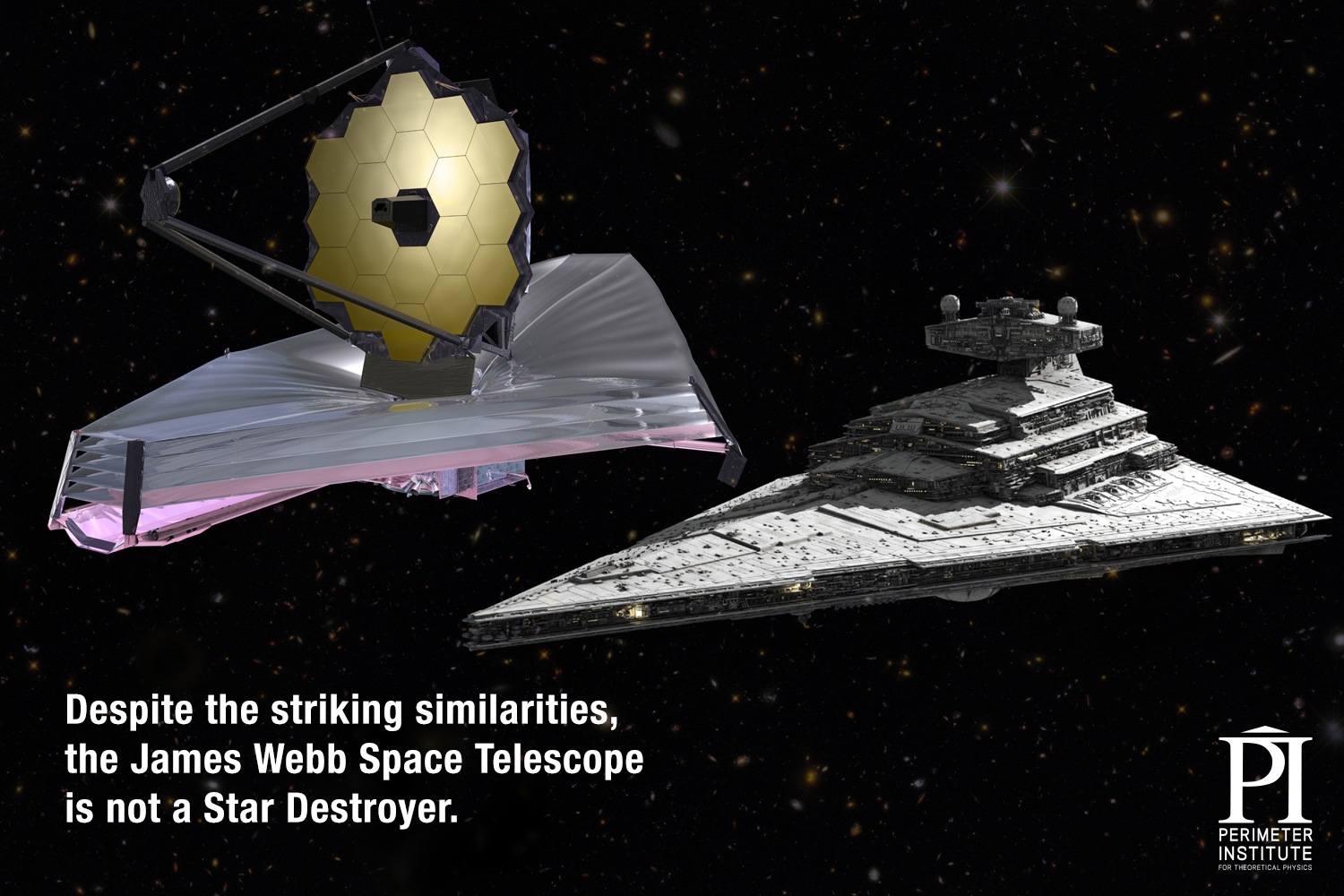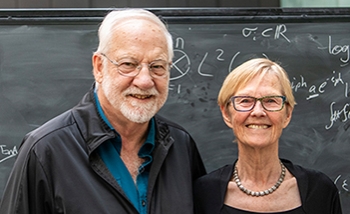For decades, the Hubble Space Telescope has given humanity an incredible eyepiece on the universe, but it is beginning to reach its limits.
To gaze deeper into the cosmos than ever before, next year NASA will launch the James Webb Space Telescope, which will be 100 times more powerful than Hubble.
It is a machine of incredible sensitiity and complexity – a feat that "comes up to the edge of impossible engineering," says Amber Straughn, a NASA scientist who delivered a public lecture about the telescope at Perimeter Institute earlier this month.
We asked Straughn to share some of her favourite factoids about the telescope, and we sleuthed out some of our own. Here they are, along with clips of Straughn explaining some of the more mind-boggling aspects of NASA's next great telescope.
Watch Amber Straughn explain why Hubble orbits at such a great distance:
Watch Amber Straughn explain why the James Webb Space Telescope is so large:
Watch Amber Straughn explain the "incredible precision" of the James Webb Space Telescope's mirrors:
Watch Amber Straughn describe the "two weeks of terror" of the James Webb Space Telescope's unfolding process:
Watch Amber Straughn's full Perimeter Institute Public Lecture:
Sign up to receive alerts about public lectures, Slices of PI, and much more.
About PI
Perimeter Institute is the world’s largest research hub devoted to theoretical physics. The independent Institute was founded in 1999 to foster breakthroughs in the fundamental understanding of our universe, from the smallest particles to the entire cosmos. Research at Perimeter is motivated by the understanding that fundamental science advances human knowledge and catalyzes innovation, and that today’s theoretical physics is tomorrow’s technology. Located in the Region of Waterloo, the not-for-profit Institute is a unique public-private endeavour, including the Governments of Ontario and Canada, that enables cutting-edge research, trains the next generation of scientific pioneers, and shares the power of physics through award-winning educational outreach and public engagement.
You might be interested in




